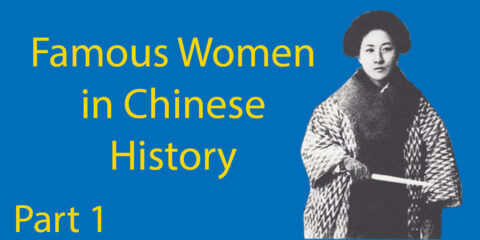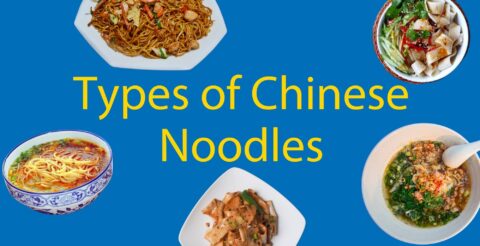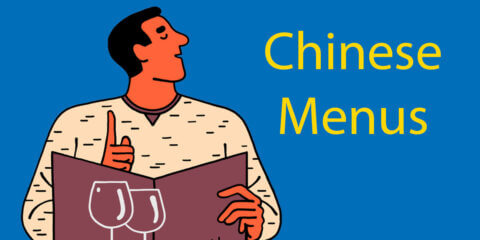Are You Guilty of Believing These Top 10 Myths about Chinese Martial Arts?
This is a guest post written by language learner and martial arts enthusiast Andrea Roberto.
What do you know about Chinese martial arts?
If you’re thinking that qi (inner energy) is at the core of fighting ability and that it’s all for defensive purposes only, I’m here to tell you that you’re wrong.
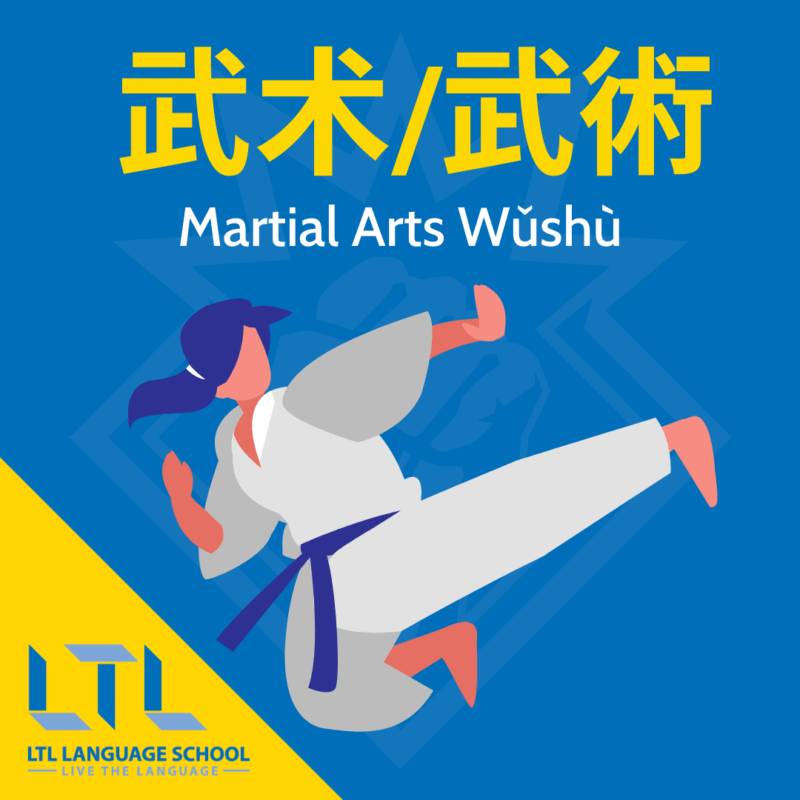
If you’re thinking ‘Who even are you and why should I trust you?‘ I want to say that firstly, I respect your skepticism and secondly, let me tell you why I’m more than qualified to speak about this topic.
I practiced martial arts for over 25 years and learned Mandarin specifically to study martial arts in China.
I studied under different masters, both Chinese and non-Chinese, of different schools and have tried each of the following styles: chaquan, xingyiquan, taijiquan (Chen and Yang), shaolinquan, choylifut, hung gar.
If you are like me, you might be studying or be interested in martial arts because you fell victim to one or more of the myths that persistently circulate about it.
Those exact misconceptions are the focus of this article.
I am going to debunk the top 10 most persistent myths about Chinese martial arts one by one.
Let’s go!
Chinese Martial Arts Myths || It’s An Art
Chinese Martial Arts Myths || It Comes From Spirituality, Not Violence
Chinese Martial Arts Myths || Weapons Aren’t Used
Chinese Martial Arts Myths || Used For Defense Only
Chinese Martial Arts Myths || Student Only Learn Internal or External Styles
Chinese Martial Arts Myths || Qi is a Magical Muscle Power
Chinese Martial Arts Myths || Admission Rites, Belts, Levels
Chinese Martial Arts Myths || The Golden Age Has Passed
Chinese Martial Arts Myths || You Don’t Need To Fight To Learn
Chinese Martial Arts Myths || Masters Are Superheroes
Chinese Martial Arts Myths || BONUS Vocab
Chinese Martial Arts Myths || FAQs
#1 It’s an Art
What do we mean when we say “martial arts”?
The term “martial art” refers to any discipline that studies and teaches fighting techniques, with or without weapons.
That means fencing and boxing are also martial arts.
Which brings us to the first myth, the misconception of the word “art”.

The contemporary meaning of the word “art” is quite far from the original one, which meant something along the lines of “discipline”, “profession”, “ability”.
Much like the word gongfu (kungfu), in Chinese.
So, when you hear people claiming that Eastern disciplines are an art form, while boxing or MMA are not, just know that they are seriously romanticising and exaggerating the spiritual component of these systems.
The Chinese word for martial arts is 武術 wǔshù (bujutsu, in Japanese), which literally means “war/combat techniques”.
Martial arts are in fact a codified system of techniques that serve the purpose of attacking or defending. That is it.
What about the spiritual and philosophical aspect of Chinese martial arts? That is the second myth that needs debunking.
#2 It Comes From Spirituality, Not Violence
Many Chinese schools of wushu have incorporated some profound and universal concepts either from Daoism (Taoism) or from Buddhism.
But this came much later in their development.
Martial arts were born out of practical reasons. Not to elevate your spirit, but to improve and systematise the fighting capabilities of the people practising them.
So, all the amazing philosophical implications with which many masters season their classes are not the “real spirit” of any martial art: they are an interesting subsequent development.
I personally find it fascinating, because the idea of connecting a physical activity with mental and spiritual improvement is important to me.
But it was not how it all began. At the beginning the goal was to kill or not be killed. And with this, here comes the third myth.
For more on Chinese history, check out our beginner’s guide to Chinese Dynasties!
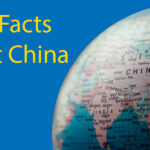
Prepare to be Shocked: 100 Mind-Blowing Facts About China You Won’t Believe! 😲
Discover these insane facts ⭐️ 100 facts about China that will amaze you from number of people to landmass and much more.
#3 Weapons Aren’t Used
To defend yourself against an occupying or threatening force, you had to rely on the most effective technique at your disposal.
This of course was no dragon punch, tornado kick or vibrating palm. It was good old steel!
Weapons were the first and, for a long time, the main thing taught in martial schools.
Martial schools were born to train soldiers, and soldiers do not go to war bare-knuckled.
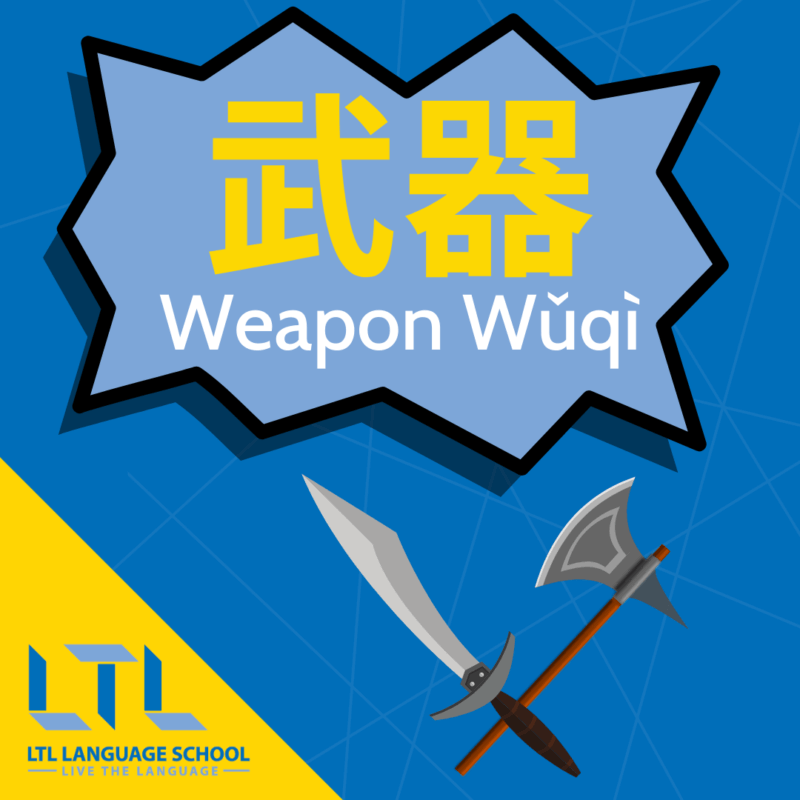
Training had to be effective in the shortest time possible.
A state could not afford to keep a soldier idle for years before he could be sent to war or to the borders to defend the motherland.
The long training one needs to master contemporary martial arts is also something that came later.
Besides, “the old one hundred families” (老百姓 lǎobǎixìng, the word the Chinese use to indicate the common people in their entirety) had too much to think about on their own.
They had no time to waste in martial training.
Bare hand techniques came about centuries after and were originally born in the poorest layers of the population.
To go through military training, one had to be a soldier or the son of a rich family, as schools were not free and students had to purchase their own weapons.
So, at a certain moment during Chinese (and Okinawan) history, some forms of bare-knuckle fighting started to be codified among the poorest social classes.
From these forms were born the martial arts surviving today, that later incorporated some of the weapons of the military tradition.
BONUS || Do you know the 100 most commonly used Chinese characters? Check them out here.

Top 100 Most Common Chinese Characters – With Examples!
Learn the top 100 most common Chinese characters super fast. Download our PDF, watch our short video, take our quiz. Learn from the Mandarin experts.
#4 Used For Defence Only
“Martial arts are for defence only”…ever heard this?
There’s no way around it. This idea is totally wrong!
The Chinese systematised fighting techniques with the precise goal to attack and harm people.
Military or martial training was a necessary part of the daily life in sophisticated societies and states.
Be it for defence or to conquer territories that were strategic to the state, the army had to be efficient, period.
The idea that if you study a fighting system you should use it only to defend yourself belongs to our contemporary mindset. It is not something that was born with Chinese wushu.
#5 A Student Only Learn Internal or External Styles

In Chinese martial arts you will come across a distinction between Neijia (內家) and Waijia (外家), i.e. internal and external styles or schools.
This distinction is fictitious and very contemporary.
It dates back to the beginning of the 20th century.
There is a difference between internal and external work (內功 neigong and 外功 waigong), but every major school had both.
This distinction refers to the focus of the various styles, which supposedly can be more on breathing and internal movements or on external ones.
Once again, the reasons are practical.
If in battle you only focus your internal energy on breathing, your opponent has already killed you, pillaged your village and gotten drunk to celebrate.
Jokes aside, it is simply absurd to think that fighting systems born out of necessity needed ten or more years to be learnt and used.
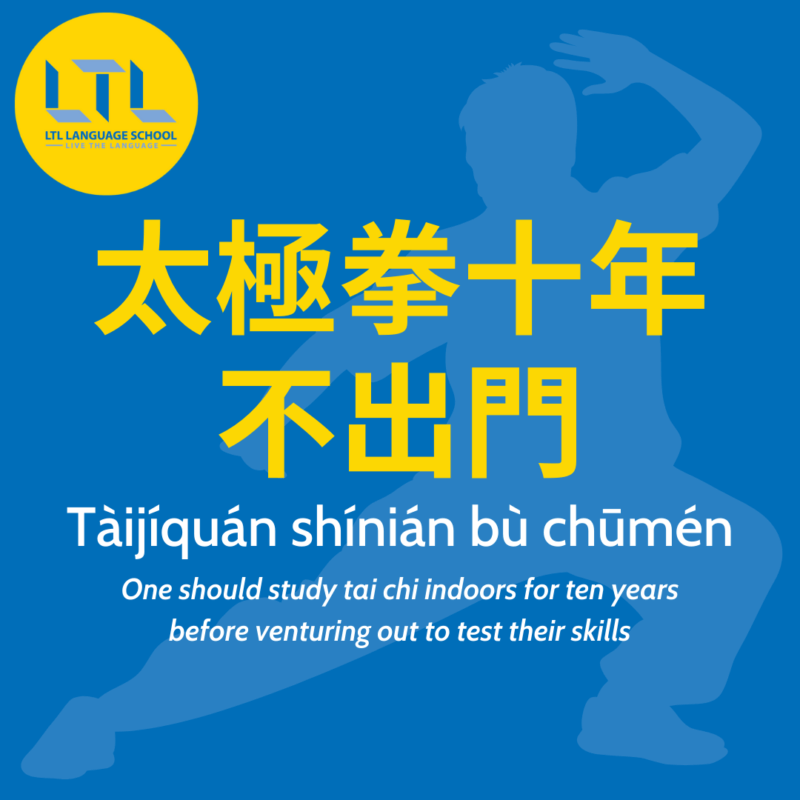
Originally every system had external, very practical exercises and techniques.
The internal part was developed as knowledge of human anatomy and balance of the two progressed.
The internal was practiced to make the external better, more efficient and to prolong the life span of the practice.
It’s just like weightlifting and mobility exercises in modern fitness industry.
Notably, this isn’t a misunderstanding of the West. The legend about this distinction among schools originates in China, we just imported it.
Proof of this completely Chinese origin is that many taiji teachers repeat, with pride, the following:
“When you study taiji, you’ll have to stay indoors for ten years, before going out to try your skills.”
#6 Qi is a Magical Muscle Power
There’s plenty of misconceptions about “internal energy”, known as 氣 qi.
Many masters and their students love to distinguish between muscular power and 氣 qi.
Some will even push as far as to say that “in internal styles we don’t use muscles”.

Aside from the unfitness that many of these martial artists display, this is simply impossible.
If you move, you use muscles, there is no escaping it.
Anyway, the theory behind such statements is that internal martial arts teach you to use energies that are much more powerful than brute muscle strength, and that can be accumulated and delivered through seemingly magical movements.
This defies human anatomy, physics, and science in general.
There are of course some Chinese masters that thrive on these myths, but maybe take their claims with a pinch of salt.
The idea that Chinese martial arts help you develop superhuman abilities is mainly caused by something lost in translation.
The Chinese language has a way of describing things that sound very poetic in most western languages. And that caused the aura of mysticism to be born.
Chinese wushu is surprisingly scientifically accurate, considering the available science at the time.
An example is the stress on mobility and body conditioning.
Mobility is fundamental for strength, and in traditional training routines it is of paramount importance.
The same goes with conditioning. You see, no conditioning starts with a Bai Mei that has you hit a 30 cm-thick wood board.
It starts with something much softer, and the difficulty increases gradually.
The Chinese noticed that if you started hitting hard things “using the power of your intention to transfer your qi on your knuckles”, you lost a significant range of movement capability with your hands.
In other words, you broke your limbs. And that was not very useful in battle, in a fight, or even in everyday life.
Unfortunately, the habit of using words that to us sound extremely colourful to indicate parts of the body, like the “cinnabar field” (丹田 dantian), for example, and the different explanations of how the body works compared to ours, produced linguistic and conceptual monsters.
So, beware.
I would suggest that you study some general concept of biomechanics before learning the legends of how the founder of your style defeated three armies and four evil dragons using the light side of The Force.

Chinese Inventions 🎆 12 Amazing Ones that Changed the World
You’ve probably heard of the Four Great Chinese Inventions: paper, gunpowder, printing and the compass. But what others also changed the world?
#7 Admission Rites, Belts, Levels
There was in fact a traditional rite to become an inner pupil of a master.
The Rite | 拜師禮 bàishīlǐ – allowed an ‘external student’, that was deemed worthy by the teacher, to access more advanced teachings.
The wording “inner” refers to the fact that apparently these students trained directly inside the house of the master, while the rest had to accept a lesser treatment and train outside.

This is not a myth.
Although some masters still perform this kind of rite, the practice has lost a lot of its meaning.
Chinese masters are practical and much less conservative than in the past.
If you want to learn and can pay, they will teach you, do not worry about that.
Grades and exams are as well a later addition.
Traditionally there was no certification of your level, just the opinion of the master on your capabilities and effort. Today it is still like that in the majority of the cases.
There are some masters that developed a certain love for the spotlight… They take part in the politics of martial arts, teach in some state-regulated schools, and might even handle you a business card with a lot of titles on it.
These titles are not in any way an indication of the capabilities of the master. To be frank, quite the opposite.
Have you tried learning martial arts before? Let us know about your experience in the comments below.
In the official wushu circles two things count: aesthetics and tournaments.
What you see in the form competitions – even though they love to distinguish between traditional and contemporary wushu – is all, with no exception, contemporary.
Good looks are the only thing they care about, so it all became a sort of dance, whose movements are inspired by traditional forms.
But, if you have a little experience, you’ll notice that there is no power, just speed and noise (voice and tin weapons, to make the whole show more spectacular).
Traditional wushu masters tend to teach in parks.
There is where I would go to find one, if I were you…but you’ll have to be able to speak Chinese, because most of the old ones do not know a word of English.
#8 The Golden Age Has Passed
In many fields, people tend to see the past as a sort of golden era, where things were better than in the present.
Now, this attitude is as old as humankind.
This normally has a lot to do with older generations struggling to get used to the world changing around them. But it is painfully true as far as Chinese martial arts are concerned.
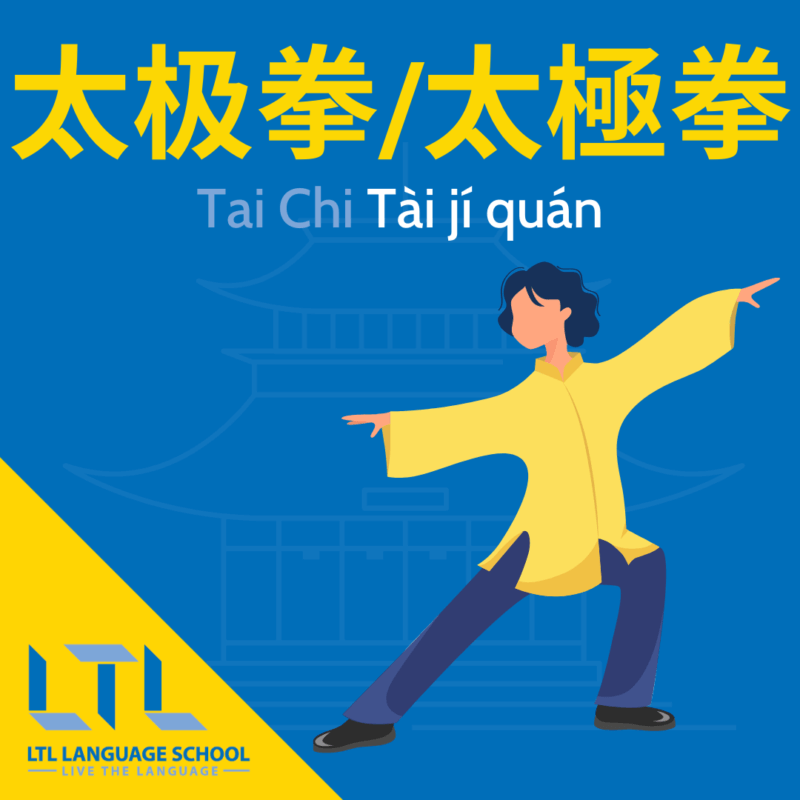
The reasons are mixed.
Firstly, in general we do not need to be able to defend ourselves by hand, sabre, spear, or sword.
We haven’t for some centuries.
Secondly, martial arts schools were annihilated during Maoism, as part of a cultural heritage the regime wanted to get rid of.
Finally, real training, the effective one, is hard, so not quite palatable for the masses, and not really remunerative.
The above does not mean, however, that old wushu was better than anything else we have now.
This is as false. Modern, scientifically backed training techniques are more efficient than anything we had in the past.
Many students and masters of Chinese martial arts keen to reject this, but an average boxer with a 12-to-18-months’ training is quite likely to beat any average person who’s trained in Chinese martial arts for the same period.
Statistically, practical training developed using biomechanics wins all the time.
So, if you want to study wushu to defend yourself, you either choose a school that actually practices self-defence and sparring.
There are some, unfortunately not many. In any case, be resilient in your search.
ONE LAST NOTE || Chinese martial arts developed with trial and error, what worked was kept, what didn’t was discarded.
Just because something is old and traditional, it does not mean it has any value.
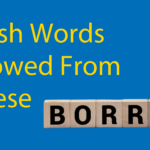
English Words Borrowed From Chinese 📣 35 Words Commonly Used in English
Did you know that there are actually many English words that are borrowed from Chinese? Today we analyse 35 of the most widely used (with some surprises).
#9 You Don’t Need To Fight To Learn
If you find a school that does not do sparring, you will not learn to fight.
Forms are extremely useful for a lot of purposes. They teach you basic techniques and some rudiments of footwork.
They are excellent for physical self-awareness and mobility. And they provide a certain measure of movement and stimulus to the muscles.

Most of all, they teach the correct use of the body.
But it is what they do not teach that is extremely important.
With forms you do not learn distances, time, strategy and above all you do not learn to dominate yourself in front of fear and pain.
When you have someone in front of you that wants to beat the living daylights out of you, you will be afraid, and fear will paralyse you.
All the form (套路 táolù in Chinese) of the world will not save your dignity.
Mike Tyson once said: “Everybody has a plan, till they get punched in the face”.
He also stated that he was afraid every single time he had to get on the ring.
He was a beast and would fight with rules. And he was afraid.
Now imagine you find yourself in a life-or-deathish situation and must rely on your solo gongfu training…
#10 Masters are Superheroes
No, they are not.
They are human beings. They are not perfect, they are full of issues, like anyone of us.
Some of them will smoke in your face while you train. Others will get you totally drunk with cheap baijiu, after having you eat whatever their wife has prepared.
Most of them will show off and speak very highly of their style, criticising all the other masters and different schools.
As I said, they are human beings, so I highly recommend you get prepared and leave your Hong Kong film ideals at home, otherwise you’re up for a serious heartbreak.
BONUS || Vocabulary
| Hanzi | Pinyin | English Meaning |
|---|---|---|
| 武術 | wǔshù | Martial arts |
| 查拳 | cháquán | A style of Chinese wushu |
| 形意拳 | xíngyìquán | A style of Chinese wushu |
| 陳氏太極拳 | chénshì tàijíquán | A style of Chinese wushu |
| 楊氏太極拳 | yángshì tàijíquán | A style of Chinese wushu |
| 少林拳 | shàolínquán | A style of Chinese wushu |
| 蔡李佛 | cáilǐfó | A style of Chinese wushu (known in the West by its Cantonese name, choylifut) |
| 洪家 | hóngjiā | A style of Chinese wushu (known in the West with its Cantonese name, hung gar) |
| 功夫 | gōngfu | Erroneously thought to mean martial arts, it actually means “ability obtained through practice and effort”, de facto it equals “mastery”. |
| 老百姓 | lǎobǎixìng | People, folk (lit. “the one hundred surnames”) |
| 內家 | nèijiā | Internal style |
| 外家 | wàijiā | External style |
| 內功 | nèigōng | Inner work |
| 外功 | wàigōng | External work |
| 太極拳十年不出門 | tàijíquán shínián bù chūmén | “When you study taiji, you’ll have to stay indoors for ten years, before going out to try your skills” (a sentence you might hear from masters of taiji) |
| 氣 | qì | Inner energy, life force, vital spirit |
| 丹田 | dāntiān | Cinnabar field (name of three points of the human body in traditional Chinese medicine, located 2 inches below the navel – lower dantian – , on the sternum – central dantian – and between the eyebrows -upper dantian) |
| 拜師禮 | bàishīlǐ | Rite by which a student became an inner student of a wushu master |
| 散打 | sǎndǎ | Sanda, a Chinese martial art similar to kickboxing |
| 套路 | táolù | Form |
| 多謝承讓 | duōxièchéngràng | “Thank you for letting me win” (sentence with which the winner of a sparring match traditionally put an end to a fight, when his or her superiority was clear). |
There are many other myths I would love to debunk (like that Shaolin Temple’s wushu is 200,000 years old), but I think that the ones above are enough for today.
My intent was not to demolish something that was part of my daily routine for 25 years. Quite the opposite.
It is because I love Chinese gongfu that I urge you, if you plan to go to China to learn something of this rich tradition, to get rid of all the prejudices you might have about wushu in China, and just keep yourself open to the experience.
If you do not stop at the first thing you find and are ready to see through it, you will learn something for sure. It just might not be what you wanted, but maybe it is what you need.
Chinese Martial Arts Myths || FAQs
How do you say martial arts in Chinese?
In Chinese, martial arts is wǔshù, literally translating to ‘military techniques/skill’.
The characters for wǔshù are 武术 in simplified and 武術 in traditional.
What are Chinese martial arts?
Chinese martial arts, known collectively as Wushu (wǔshù, 武术) include a range of traditional fighting styles, including, among others, Kung Fu, Wing Chun, Tai Chi and Bajiquan.
Are there any Chinese martial arts movies?
Yes, there’s plenty!
Our personal favourite here at LTL HQ is Crouching Tiger, Hidden Dragon
Can I learn Chinese language and Chinese martial arts at the same time?
Absolutely!
Immersive classes at LTL can be structured according to your schedule, meaning you have the rest of the day to explore China, practice your conversation skills or become a martial arts master!
Want more from LTL?
If you wish to hear more from LTL Mandarin School why not join our mailing list?
We give plenty of handy information on learning Chinese, useful apps to learn the language and everything going on at our LTL schools.
Sign up below and become part of our ever-growing community.
BONUS | Learn Chinese with LTL in person. Our student community is growing by the week.


 Hi, my name is Ilaria! I am from Italy and I am a Student Advisor at LTL. Fancy coming to study with us in China? Drop me a message.
Hi, my name is Ilaria! I am from Italy and I am a Student Advisor at LTL. Fancy coming to study with us in China? Drop me a message.